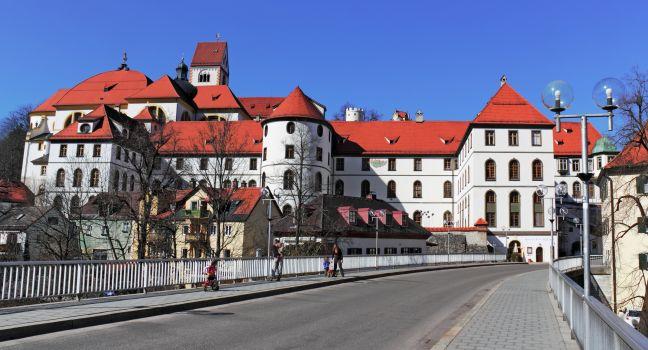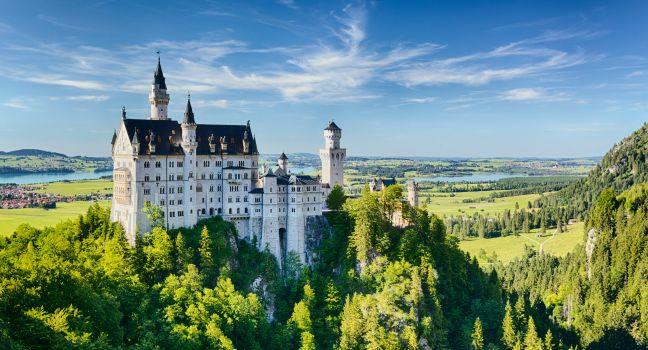Würzburg's prince-bishops lived in this glorious baroque palace after moving down from the hilltop Festung Marienberg. Construction started in 1719 under the brilliant direction of Balthasar Neumann. Most of the interior decoration was entrusted to the Italian stuccoist Antonio Bossi and the Venetian painter Giovanni Battista Tiepolo. It's the spirit of the pleasure-loving Prince-Bishop Johann Philipp Franz von Schönborn, however, that infuses the Residenz. Now considered one of Europe's most sumptuous palaces, this dazzling structure is a 10-minute walk from the train station, along pedestrian-only Kaiserstrasse and then Theaterstrasse.
Tours start in the Vestibule, which was built to accommodate carriages drawn by six horses. The king's guests were swept directly up the Treppenhaus, the largest baroque staircase in the country. Halfway up, the stairway splits and peels away 180 degrees to the left and to the right. Soaring above on the vaulting is Tiepolo's giant fresco The Four Continents, a gorgeous exercise in blue and pink that's larger than the Sistine Chapel's ceiling. Each quarter of the massive fresco depicts the European outlook on the world in 1750—the savage Americas; Africa and its many unusual creatures; cultured Asia, where learning and knowledge originated; and finally the perfection of Europe, with Würzburg as the center of the universe. Take a careful look at the Asian elephant's trunk and find the ostrich in Africa. Tiepolo had never seen these creatures but painted on reports of them; he could only assume that the fastest and largest bird in the world would have big muscular legs. He immortalized himself and Balthasar Neumann as two of the figures—they're not too difficult to spot.
Next, make your way to the Weissersaal (White Room) and then beyond to the grandest of the state rooms, the Kaisersaal (Throne Room). Tiepolo's frescoes show the 12th-century visit of Emperor Frederick Barbarossa, when he came to Würzburg to claim his bride. If you take part in the guided tour, you'll also see private chambers of the various former residents (guided tours in English are given daily at 11 and 3). The Spiegelkabinett (Mirror Cabinet) was completely destroyed by Allied bombing but then reconstructed using the techniques of the original rococo artisans.
Finally, visit the expansive formal Hofgarten (Court Gardens), to see its stately gushing fountains and trim ankle-high shrubs that outline geometric flowerbeds and gravel walks.
On weekends, the Hofkeller wine cellar, below the Residenz, runs tours that include wine tasting. Ask at the ticket counter.





